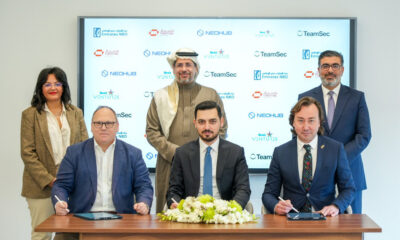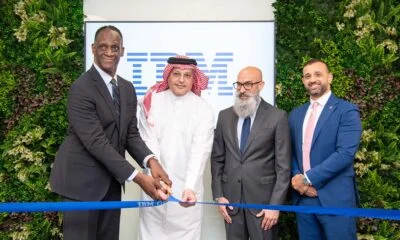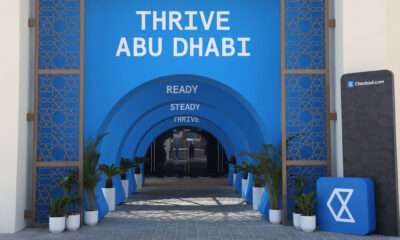News
QFZA Announces Qatar’s First Laptop Manufacturing Facility
Once operational, it will become Qatar’s first laptop manufacturing facility and ship out over 350,000 products every year.

The global outbreak of the COVID-19 pandemic and the subsequent swift transition toward remote work has tested the production capacity of virtually every laptop manufacturer. In the Middle East, the laptop and desktop market grew more than 12 percent during the pandemic, with shipments going up by 23 percent. Now, Qatar Free Zones Authority (QFZA) has announced its plan to establish a state-of-the-art production facility in Umm Alhoul Free Zone. Once operational, it will become Qatar’s first laptop manufacturing facility and ship out over 350,000 products every year.
The task of building the facility has been appointed to iLife Digital, a leading intelligent robotics and electronics company based in Florida, US, and Prime Technologies, a subsidiary of Ali Bin Ali Holding. The two companies will use it to produce everything from laptops to desktop computers to smartwatches.
“We are proud to host this partnership between iLife Digital and Prime Technologies at Umm Alhoul Free Zone. It is the latest example of our close collaboration with the Qatari private sector to foster growth and innovation for the country and the broader region,” said H.E. Ahmad Al-Sayed, Minister of State and Chairman of QFZA.
In addition to becoming the region’s manufacturing powerhouse, the new facility will also support logistics and R&D activities and become home to a consumer solutions center. In total, it’s expected to create 160 jobs in the region, including 144 skilled opportunities.
Also Read: Dubai-Based Carasti Lets You Rent A Car For Up To Two Years
“Our Group has always been known for pioneering efforts and supporting innovations to get the best for the people of Qatar. The new facility, with its state-of-the-art production and R&D facility along with a logistics and customer solutions center, is a reiteration of such efforts,” commented Vice-Chairman & EVP of Ali Bin Ali Holding Mr. Nabeel Ali Bin Ali.
The construction of Qatar’s first laptop manufacturing facility is an important step toward achieving the country’s National Vision 2030, whose goal is to create a knowledge-based economy and promote economic diversification.
News
Influencer Growth Fuels Saudi Creator Economy Surge
The Kingdom’s creator economy grew over 32% in Q1 2025, fueled by TikTok, UGC, and cost-per-action (CPA) influencer models.

Saudi Arabia’s creator economy saw a significant 32.37% growth in the first quarter of 2025, driven by an uptick in influencer marketing, content-driven e-commerce, and the increasing influence of user-generated content (UGC). These insights come from a recent study by Admitad and the Stllr Network.
Much of this momentum is coming from video-based platforms, where brands are leaning on creators who feel more relatable than polished ad campaigns. The trend shows a clear preference for authenticity, as audiences gravitate toward content that feels real and personal.
Mohannad Alzahrani, Co-founder and VP KSA of Stllr Network, highlighted the shift: “The rise of user-generated content (UGC) is changing the way brands engage with consumers. Audiences trust real creators more than traditional advertising, making UGC a key driver of authenticity and sales”.
TikTok remains the dominant platform in this space, reportedly reaching 88% of the Saudi population. It also showed the sharpest rise in influencer-led transactions. Other platforms followed with solid, if less dramatic, growth: X was up 17%, Instagram increased by 12%, and Telegram by 10%.
In terms of content niches, beauty led the pack with a 56% growth rate, followed by lifestyle at 45.8% and fashion at 18.2%. Tech content also showed healthy traction at 10.6%, while entertainment, food, fitness, parenting, and gaming posted smaller — but still positive — gains.
Also Read: Top E-Commerce Websites In The Middle East In 2025
The report analyzed more than 300,000 influencer-driven purchases. These efforts translated into a 15% year-on-year jump in Gross Merchandise Value (GMV) and a 5% increase in the number of orders in 2024. Influencers themselves are seeing the benefit, with average order values hitting $54 and creator earnings rising by 14%.
A noticeable trend is the move away from fixed-rate deals. More influencers in Saudi Arabia are embracing hybrid compensation models — especially cost-per-action (CPA) setups that tie their earnings directly to performance.
As Anna Gidirim, CEO of Admitad, explains, “The CPA model brings much-needed transparency to influencer marketing. Brands only pay for actual results, and influencers benefit by securing long-term partnerships while offering their audiences exclusive promo codes and special discounts”.
However, the ecosystem still shows a gender imbalance. The data indicates that 63% of creators in Saudi Arabia are men, while women account for just 37%.


























